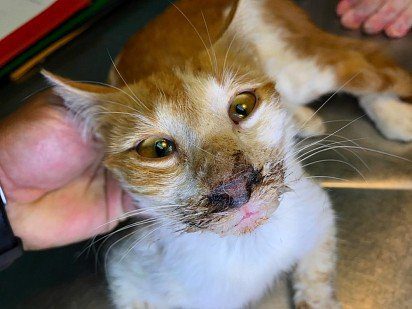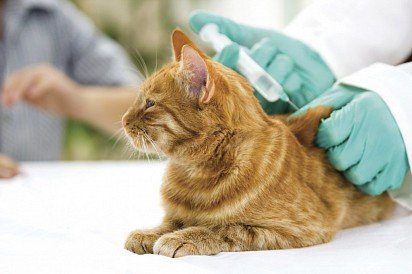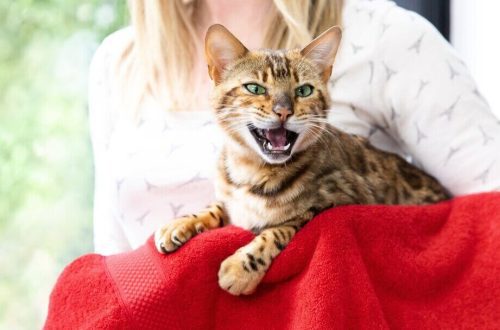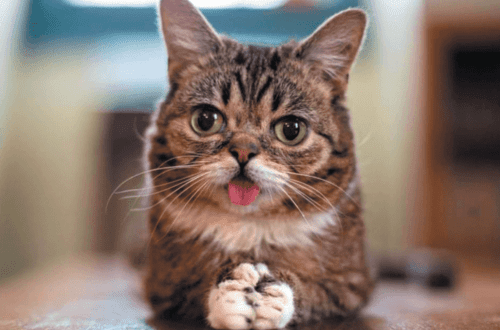
Distemper in cats: symptoms, treatment, frequently asked questions
Distemper in cats develops as a result of ingestion of an animal virus of the Parvoviridae family. The disease is widespread due to the high contagiousness and resistance of the microorganism to external environmental conditions. Unfortunately, most cases of the disease end in the death of a pet, but knowing how the pathology is transmitted, the features of its course and preventive measures, it is quite possible to save a fluffy pet.
Contents
Features of the disease

Discharge from the nostrils and eyes is one of the signs of distemper in cats and cats
Distemper, or panleukopenia, is a highly contagious disease. The clinical picture depends on the type of the disease, but it always manifests itself with fairly clear signs. This is due to the rapid multiplication of the virus in the body, the rate of which is more dependent on the state of the immune system. Kittens, pregnant and debilitated cats, as well as purebred pets are considered the most vulnerable felines.
The virus that causes distemper in domestic cats is highly resistant to external factors. It can tolerate low and high temperatures, even heating up to +60 ˚С can destroy it only after 60 minutes. Disinfectants also cannot destroy the pathogenic microorganism, especially if they are diluted in low concentrations.
How can a cat get distemper
There are several ways in which a cat can become infected with the distemper virus. In each of them, the source is the biological secretions of an already sick animal or carrier of the infection.
Method of infection
Detailed description
Direct contact
A pet can “pick up” the disease during direct contact with objects that a sick animal has come into contact with. The virus can enter the house and on the things of the owner.
oral route
Infection with distemper will also occur in the case of eating food or drinking in which the infection has survived.
Through the air
If a healthy cat is in the same room as an infected one, then panleukopenia cannot be avoided.
Through bites
Blood-sucking insects are capable of carrying the feline distemper virus.
in utero
The feline distemper virus is able to cross the placental barrier. In most cases, the fetuses die before birth. If the kittens managed to be born, then in the near future (no more than two days), they still die.
Many owners are interested in whether a cat can get distemper from a dog? No, he can not. The viruses that cause plague in these animals are completely different.
How does distemper appear in cats?
The distemper virus of cats can affect almost all organ systems: nervous, respiratory, cardiovascular, digestive tract. The symptoms of the disease depend on which organs the microorganism managed to damage, on the possibilities of the cat’s immune defense, and also on the form of the disease, which can be of three types.
Form of the disease
Features
Symptoms
Lightning
It has a particularly high mortality, as it develops quickly. It is observed mainly in kittens of the first year of life. The smaller the kitten, the faster it dies. The fulminant form is often manifested by disorders of the nervous and digestive systems.
- Refusal to suckle, food, water
- Apathetic state
- Avoidance of bright lights and harsh sounds (begins to squeak strongly when they occur)
- Diarrhea, vomiting
- Tousled wool
- Trembling in the body, convulsions
- Paralysis
Sharp
It is more common in older cats. The incubation period is from 3 to 10-14 days. The clinical picture is varied, depending on the number of affected organs. Basically, the gastrointestinal tract, respiratory system, and heart suffer. With timely access to specialists and competent treatment, the pet can recover. If, in the next 3-5 days after the onset of symptoms, no help was provided to the animal, it will die.
- Apathy
- Temperature rise up to 41˚
- Vomit contains impurities of blood, mucus, foam
- Despite thirst, the cat refuses to drink water
- Spots on the skin
- Cough, wheezing
- Discharge from nostrils, eyes
- Tachycardia
- Shortness of breath, mouth breathing
- Sunken eyes, disheveled, dull coat
subacute
It is typical for adult mustachioed individuals, cats that have been vaccinated against distemper. The disease can proceed within 1-3 weeks.
The same as in the acute form of the plague, but in a less pronounced form.
Distemper diagnosis
If there is even the slightest suspicion of distemper, the cat must be urgently delivered to the clinic. The veterinarian will not only examine the pet, but also send it for testing. You will need to donate blood and feces – the diagnosis is made on the basis of the detection of virus particles using PCR. In this case, it must be taken into account: if the cat was vaccinated before the onset of signs of the disease, then the result of the tests may have a positive reaction.
Medical events

At the first symptoms of distemper, we recommend that you immediately contact your veterinarian.
Treatment of distemper in cats includes several tasks: destroy the virus, eliminate intoxication, prevent secondary infection, increase immunity, and so on. To combat the virus, drugs such as Vitafel, Fosprenil, Enterostat are used. The scheme of administration is prescribed by the veterinarian.
As a symptomatic treatment of distemper in cats, various drugs are used.
- Sodium chloride. The distemper virus causes severe dehydration and intoxication. The body cannot deal with toxins on its own. To restore the balance of water, salts, minerals, intravenous administration of a chloride solution helps.
- As a rule, distemper in cats is accompanied by the addition of a secondary infection. To eliminate it, the veterinarian will prescribe antibacterial agents.
- Diuretic fees. To quickly cope with toxic metabolic products and remove them from the tissues and the body, decoctions of diuretic herbs and fees are used. In frequent small portions, a cat can be given a decoction of lingonberries, horsetail, bearberry leaves and others.
- If there is no vomiting, it is recommended to use Regidron or Ringer’s solution to normalize the water-mineral balance. The daily amount of the solution is calculated based on the ratio of 5 tbsp. l. liquid per 1 kg of animal weight. Glucose solution and sodium bicarbonate can be added to diluted preparations (the proportions must be clarified with a veterinarian).
- With pain syndrome, spasms in the digestive tract, the use of antispasmodics, for example, No-shpy, is indicated.
- Catozal will help to strengthen metabolic processes, improve immunity, and stimulate the body to recover. It must be administered within 7 days.
- The complex of treatment also includes vitamin supplements, especially antioxidants A and C, vitamins of group B. It is advisable to combine their intake with preparations containing iron, for example, Ferrodextran.
Home care
Competent care at home for a cat with distemper increases the likelihood of a successful recovery. If possible, it is better to give injections by calling a doctor at home, since any stress can adversely affect the condition of the animal. If you have to visit the clinic every day, then for transportation it is better to build a basket yourself (for example, from a cardboard box), so that later it can be burned.
The room where the cat is located should be warm and dry, without through wind. Since the virus also affects the nervous system, you need to provide the pet with peace and bright light.
You can drink both plain water (boiled) and decoctions of medicinal herbs. Their choice should be agreed with a veterinarian in advance, because some drugs and plant extracts may be incompatible. You need to feed the pet little by little, at the beginning of treatment – only broths, gradually adding cereals and chopped meat to them. It is recommended to follow the diet until complete recovery.
In agreement with the doctor, it is allowed to give the cat an enema. They may include herbal preparations, decoctions, antiseptics. Tray and bowls should be placed near the animal, and bedding changed daily. It is not recommended to wash your pet during illness.
Can other animals or humans get feline distemper?
Is a pet with panleukopenia dangerous to others? Cats after distemper are carriers of the virus for 4-5 months and can become its source, but only a feline can become infected. For surrounding people and pets, a mustachioed friend does not pose a danger.
The virus, the carrier of which becomes a recovered cat, is released into the external environment with biological fluids, therefore, throughout the entire period of carriage, the pet must not be allowed out of the house. The cat itself acquires immunity to the plague for a long time, sometimes until the end of its life.
Prevention
Do not forget about vaccination, and the risk of contracting distemper will be minimized
The most effective preventive measure for feline distemper is vaccination. Since there are currently enough vaccines, the doctor chooses at his own discretion. Popular drugs are: Nobivak, Multifel, Feleniffa.
For the first time, kittens are vaccinated at 1,5-2 months, and after 3-4 weeks they are revaccinated. Subsequently, the vaccine is administered once a year.
You can prevent a deadly disease if you do not let newborn kittens go outside, prevent pets from escaping and communicating with unfamiliar family members. In addition, it is necessary to monitor the immune system of a mustachioed friend, providing the cat with good nutrition and vitamins.
Method of infection
Detailed description
Direct contact
A pet can “pick up” the disease during direct contact with objects that a sick animal has come into contact with. The virus can enter the house and on the things of the owner.
oral route
Infection with distemper will also occur in the case of eating food or drinking in which the infection has survived.
Through the air
If a healthy cat is in the same room as an infected one, then panleukopenia cannot be avoided.
Through bites
Blood-sucking insects are capable of carrying the feline distemper virus.
in utero
The feline distemper virus is able to cross the placental barrier. In most cases, the fetuses die before birth. If the kittens managed to be born, then in the near future (no more than two days), they still die.
Form of the disease
Features
Symptoms
Lightning
It has a particularly high mortality, as it develops quickly. It is observed mainly in kittens of the first year of life. The smaller the kitten, the faster it dies. The fulminant form is often manifested by disorders of the nervous and digestive systems.
- Refusal to suckle, food, water
- Apathetic state
- Avoidance of bright lights and harsh sounds (begins to squeak strongly when they occur)
- Diarrhea, vomiting
- Tousled wool
- Trembling in the body, convulsions
- Paralysis
Sharp
It is more common in older cats. The incubation period is from 3 to 10-14 days. The clinical picture is varied, depending on the number of affected organs. Basically, the gastrointestinal tract, respiratory system, and heart suffer. With timely access to specialists and competent treatment, the pet can recover. If, in the next 3-5 days after the onset of symptoms, no help was provided to the animal, it will die.
- Apathy
- Temperature rise up to 41˚
- Vomit contains impurities of blood, mucus, foam
- Despite thirst, the cat refuses to drink water
- Spots on the skin
- Cough, wheezing
- Discharge from nostrils, eyes
- Tachycardia
- Shortness of breath, mouth breathing
- Sunken eyes, disheveled, dull coat
subacute
It is typical for adult mustachioed individuals, cats that have been vaccinated against distemper. The disease can proceed within 1-3 weeks.
The same as in the acute form of the plague, but in a less pronounced form.





